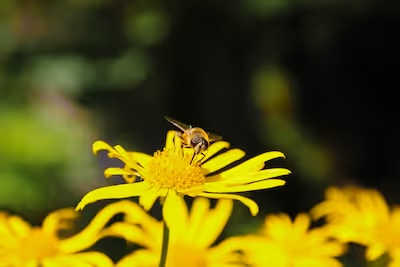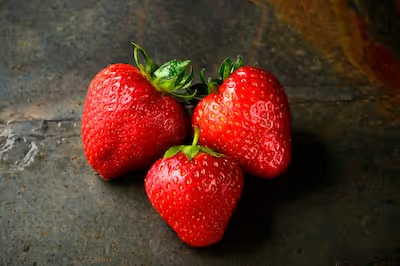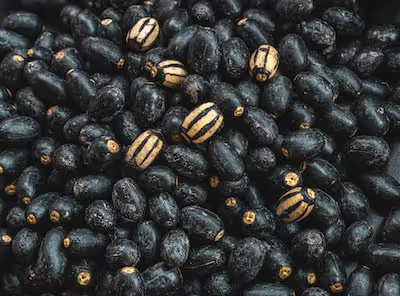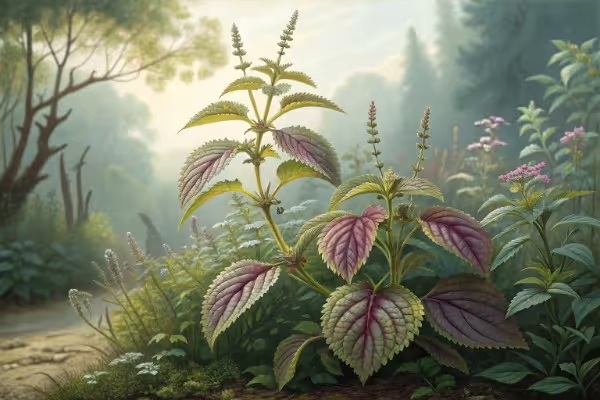Growing Lemon Balm for Freshness, Flavor, and Fragrance

Growing Lemon Balm
Growing lemon balm offers gardeners an easy ride—this hardy herb thrives in sun or partial shade and welcomes neglect. Start growing lemon balm early spring, sowing seeds shallowly in well-draining soil, and it'll burst into fragrant foliage within weeks. Keep growing lemon balm contained as it spreads generously, inviting pollinators, brightening cocktails, and seasoning dishes—read on for tips to get the most from your harvest.
Cheatsheet: Cultivating Lemon Balm for Home Use
🌱 Site & Soil
- Pick full sun to partial shade
- Use well-drained, loamy soil; pH 6.0-7.5
- Space plants 18-24" (45-60 cm) apart
🌡️ Optimal Conditions
- Thrives at 65-80°F (18-27°C)
- Water when top 1" (2.5 cm) soil dries
- Mulch to retain moisture, suppress weeds
🪴 Growing Steps
- Sow seeds 1/4" (6 mm) deep, indoors 6-8 weeks before last frost or outdoors after frost
- Transplant seedlings after last frost, roots well developed
- Pinch tips for bushier growth
- Harvest leaves when plant reaches 8" (20 cm) height
- Cut stems above leaf nodes for repeated harvests
✂️ Tools and Products You'll Need
- Organic seeds or starter plants
- Sterile seed-starting mix
- Compost or balanced fertilizer (optional)
- Clean scissors or pruners
- Watering can or hose with gentle spray
- Mulch (straw or leaf mold)
- Pots (if growing indoors or on patio)
🌿 Health, Nutrition & Self-sufficiency
- High in antioxidants and vitamin C
- Promotes calm, digestive wellness (Lemon balm tea studies: up to 42% anxiety reduction)
- Fresh leaves flavor salads, teas, desserts
- Repels mosquitoes and beneficial for pollinators
🌸 Fragrance & Storage
- Use leaves fresh for best aroma
- Dry leaves in shade for year-round use
- Store in airtight container, away from light
-
Growing Lemon Balm for Freshness, Flavor, and Fragrance
Growing Lemon Balm turns a dull corner into a bright, citron-scented engine room. I plant Melissa officinalis where I walk by daily, so my hands brush leaves and release that clean, lemony snap.
The plant at a glance
- Family: Lamiaceae, same clan as mint and basil.
- Lifespan: Hardy perennial, USDA Zones 4 to 9.
- Size: 18 to 30 inches tall and wide, 45 to 75 cm.
- Light: Full sun in cool summers, afternoon shade where summers scorch.
- Soil: Moist, well drained, pH 6.0 to 7.5, loam with organic matter.
- Flavor chemistry: Citral, citronellal, and rosmarinic acid drive aroma and taste.
Royal Horticultural Society: “Grow in moist but well-drained soil in sun to partial shade.” Source: RHS plant profile, 2023.
Site and soil that make it sing
I aim for morning sun and dappled shade after 2 p.m. in hot zones. A raised bed or a loosened, compost-rich border prevents winter wet that can kill crowns.
Work in 1 to 2 inches of finished compost, 2.5 to 5 cm. Avoid heavy nitrogen, which bloats growth and dilutes flavor.
Propagation that actually sticks
From seed
Start 6 to 8 weeks before last frost at 68 to 72 F, 20 to 22 C. Press seed to the surface since it prefers light, then mist and keep evenly moist for 7 to 21 days.
Transplant after danger of frost, spacing 12 to 18 inches, 30 to 45 cm. I pinch once at 6 inches, 15 cm, to push bushy growth.
From cuttings and division
Softwood cuttings root fast in late spring. I cut 4 inch tips, 10 cm, strip the bottom leaves, dip in rooting powder, and set in a 50:50 perlite and peat blend.
Divide mature clumps in early spring or fall. Replant divisions at crown level, then water in like you mean it.
Planting, spacing, and airflow
Give each plant room, because lemon balm likes to breathe. I set rows 18 to 24 inches apart, 45 to 60 cm, which keeps powdery mildew at bay.
Water and feeding without fuzz
One inch of water per week, 25 mm, keeps leaves tender. Mulch with shredded leaves or straw at 1 to 2 inches, 2.5 to 5 cm, to stabilize moisture and soil temp.
Feed lightly with a balanced organic fertilizer at planting, then again after the first cut. High potassium improves leaf quality, so I sneak in a touch of kelp.
Pruning for flavor and vigor
Harvest before flower buds open for peak oil. I cut stems to just above a leaf node, leaving at least one third of the plant to recover.
In midsummer I shear clumps down to 4 inches, 10 cm, and get a lush second flush. That cut also checks reseeding.
Drying, preserving, and using every leaf
Dry fast to capture aroma, ideally 95 F, 35 C, with plenty of airflow. I bag leaves while still faintly supple to prevent the dusty, hay note.
Freeze chopped leaves in ice cubes for sauces and tea. I make a simple syrup, 1:1 sugar to water, packed with lemon balm for cocktails and sorbets.
Container culture that thrives
Use a 10 to 12 inch pot, 3 to 5 gallons, 11 to 19 liters, with a peat free, compost rich mix and perlite for drainage. Water when the top inch, 2.5 cm, dries.
Feed lightly every 4 to 6 weeks. I rotate pots so all sides get even light, which keeps stems from leaning like bored teenagers.
Winter care
In Zones 4 to 6 I mulch crowns 2 to 3 inches, 5 to 7.5 cm, after the ground cools. In pots I move plants against a wall and off bare concrete to avoid freeze thaw whiplash.
Contain the enthusiasm
Lemon balm seeds around if you let blooms set. Deadhead, or harvest hard, or grow in a contained bed with edging sunk 6 inches, 15 cm.
Companions and pollinators
Bees raid the tiny white flowers, so I leave a late flush for them. I tuck lemon balm near brassicas and tomatoes, where the scent seems to blur pest scouting.
Pests and problems
Spider mites pop up in heat with low humidity. A firm water spray and better airflow knock them back.
Powdery mildew appears when leaves stay damp and crowded. Thin stems and water early so foliage dries by night.
Culinary moves I repeat all summer
- Tea that tastes like sunlight, fresh or dried, 1 tablespoon per cup, 240 ml.
- Herb butter with lemon balm, chives, and zest for grilled fish or corn.
- Stone fruit salad with torn leaves, honey, and a pinch of salt.
- Herb vinegar, 1 packed cup leaves per 2 cups vinegar, 240 g per 480 ml, for dressings.
- Cold soups, blended with cucumber, yogurt, and garlic for a bright, green lift.
Functional uses and safety
German Commission E lists lemon balm for mild stress and digestive complaints. NCCIH notes short term use appears safe for most adults, with limited evidence for anxiety and sleep support.
NCCIH: “Lemon balm appears to be safe for short-term use.” Commission E monographs also support use for nervous tension and GI upset. Sources: NCCIH 2022, Commission E.
Topical creams can shorten cold sore duration in small trials. If you take thyroid medication or sedatives, talk to your clinician before heavy use.
Best cultivars for different goals
- ‘Quedlinburger Niederliegende’: Low, dense habit with high essential oil, great for tea and syrup.
- ‘Aurea’ or ‘Variegata’: Gold splashed foliage that brightens shade, milder taste, ornamental first.
- ‘Compacta’: Tight form for small pots, easier to keep clipped on a balcony.
- Wild type Melissa officinalis: Reliable, vigorous, strong lemon with quick regrowth after cuts.
Buying guide and what to look for
Choose organic seed from reputable medicinal herb houses for consistent chemotype. For transplants, pick bushy plants with aromatic leaves and no flowers yet.
Expect seed packets to run a few dollars or euros, and quart sized starts to land in the 4 to 10 range. Avoid plants with roots circling the pot.
My field routine for steady harvests
First cut at 8 inches tall, 20 cm, then every 4 to 6 weeks as regrowth fills in. I irrigate right after harvest and feed a light top dress of compost tea.
Leaves taste brightest in the morning after dew dries. I never harvest after a long drought day since flavor thins out.
Quick comparisons and smart alternatives
- Lemon balm vs lemon verbena: Balm grows in cold climates and handles shade, verbena needs heat and a big, bright spot.
- Lemon balm vs mint: Balm tastes citrus clean without menthol bite, and it spreads by seed more than rhizomes.
- Lemon balm vs bee balm: Different genus, different flavor, bee balm flowers steal the show, balm steals the nose.
- Citronella scented geranium: Strong mosquito patio plant, but zero tea value compared to balm.
Numbers growers ask me for
Fresh yield per mature plant runs 0.5 to 1.5 pounds per cut, 225 to 680 g, depending on spacing and fertility. Two to four cuts per season are realistic in temperate zones.
Essential oil yield is naturally low, commonly 0.02 to 0.3 percent by dry weight, which is why true lemon balm oil costs a premium. Sources: ESCOP 2019, peer reviewed pharmacognosy texts.
Indoor windowsill success
South or west window with 6 hours light, or a 14 hour LED schedule at 200 to 300 micromoles PPFD. Trim weekly to prevent lanky growth and to force side shoots.
Use a well drained herb mix and bottom water to keep stems dry. A small fan for air movement prevents fungus gnats and mildew.
Common mistakes and fast fixes
- Taste fades after flowering. Cut hard, water, and feed, then pick regrowth in 2 weeks.
- Leaves blacken in the dryer. Drop temp to 95 F, 35 C, and dry in thinner layers.
- Plant sulks in full afternoon sun. Shift to morning sun and mulch to cool roots.
- Plant invades the path. Deadhead and edge, or grow in a pot sunken in the bed.
Tools and supplies I actually use
- Stainless snips for clean cuts and quick wash downs.
- 10 to 12 inch pots with real drainage holes, plus saucers with risers.
- Food dehydrator with a low setting around 95 F, 35 C.
- Organic seed from a trusted medicinal herb supplier, or locally grown starts.
- Mulch, compost, and a mild granular fertilizer with balanced NPK.
Anecdotes from the beds
I once planted lemon balm near a busy gate where delivery folk brushed past all day. That path smelled like lemon candies for weeks and the plants never looked better from constant pinching.
On hot nights I steep a handful with lime peel and a pinch of salt. It hits like a porch breeze after a long harvest day.
Credible references I lean on
- Royal Horticultural Society, plant cultivation guidance for Melissa officinalis, 2023.
- German Commission E and ESCOP monographs for traditional use and composition, 2019 and earlier.
- National Center for Complementary and Integrative Health, safety overview, 2022.
- Missouri Botanical Garden, hardiness and habit notes for Melissa officinalis, 2024.
Frequently Asked Questions about Growing Lemon Balm
What soil conditions support healthy growth?
This herb thrives in well-drained, fertile soil with a slightly acidic to neutral pH (6.0-7.0). Mixing organic compost can enrich nutrient content and encourage better drainage.
How much sunlight does this herb require?
To achieve optimal growth, plant it in an area receiving full sun to partial shade. Morning sun accompanied by afternoon shade provides ideal conditions.
How often should watering occur?
Water moderately, allowing the top inch (2-3 cm) of soil to dry between watering. Avoid waterlogging, as overly moist soil can lead to root diseases.
Which planting method produces the best results?
While planting from seed works well, propagating through root division or stem cuttings ensures quicker establishment and stronger plants.
What planting spacing proves ideal?
Space plants approximately 18 to 24 inches (45-60 cm) apart to allow ample airflow and growth room. Proper spacing helps minimize disease risk and fosters airflow.
Does this herb tolerate colder temperatures?
Yes, this plant is hardy and tolerates cold temperatures down to around -20°F (-29°C). For particularly harsh winters, applying mulch around the base protects roots from frost.
What pests commonly affect this plant, and how can gardeners address them?
Aphids and spider mites pose common threats. Regularly inspect plants and treat infestations with insecticidal soap or neem oil, maintaining a balanced ecosystem in the garden.
How and when should pruning be done?
Prune regularly during the growing season to maintain compact growth and prevent legginess. Cut stems back by half when flowering begins to encourage fresh growth and extend the harvest period.
Can this herb thrive in containers?
Absolutely. Container planting suits this herb well. Select a pot at least 12 inches (30 cm) in diameter with good drainage holes, and use quality potting soil for thriving growth.
Growing Lemon Balm is all about embracing simple pleasures—snipping fresh leaves for tea, brushing your hand through the fragrant foliage, letting that lemony scent hang in the summer air. Give this herb a sunny patch, well-drained soil, and a little attention, and it’ll pay you back with freshness, flavor, and fragrance from spring’s first shoots to autumn’s last harvest. Don’t be shy about cutting it back; regular trims keep it lush and stop it from taking over. If you’re already hooked on kitchen herbs, you might want to try branching out—maybe try your hand at growing thyme next. But for now, let lemon balm remind you how satisfying it is to grow something that brings a little joy to every day.
The Prepper's Guide to Lemon Balm
Long-Term Storage Techniques
- Drying: Tie stems loosely and hang upside down in ventilated, dark space; store leaves in airtight jars for up to 1 year.
- Freezing: Chop fresh leaves finely, mix lightly with olive oil, freeze in small ice cube trays; maintain flavor and medicinal properties 6–8 months.
- Tincturing: Combine fresh leaves with 80-proof vodka; steep 4–6 weeks; strain and store tincture in dark bottles (shelf-life 3–5 years).
Medicinal and Nutritional Value
- Lemon balm delivers antiviral, antibacterial, and calming compounds; traditional remedy for anxiety, insomnia, digestive distress.
- Infusion of leaves provides vitamin C, antioxidants; helpful immune support during prolonged isolation scenarios.
Seed Saving and Propagation Tips
- Allow healthiest plants to flower fully, dry seed heads thoroughly on plant; collect small black seeds carefully for future plantings (germination viable for up to 3 years).
- Propagate rapidly by dividing mature plants every 2–4 years to maintain vigorous growth and constant supply.
Alternative Uses for Preparedness
- Pest deterrent: Rub crushed leaves on skin or surfaces to repel mosquitoes, flies, ants.
- Natural disinfectant: Infuse vinegar with fresh lemon balm leaves for one week, strain; use diluted mixture as antiseptic cleaner for surfaces and minor cuts.
Find out which plants will thrive in your garden!
Answer a few fun questions and get custom plant recommendations perfect for your space. Let’s grow something amazing together!

start your season





